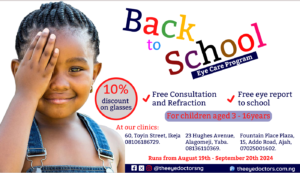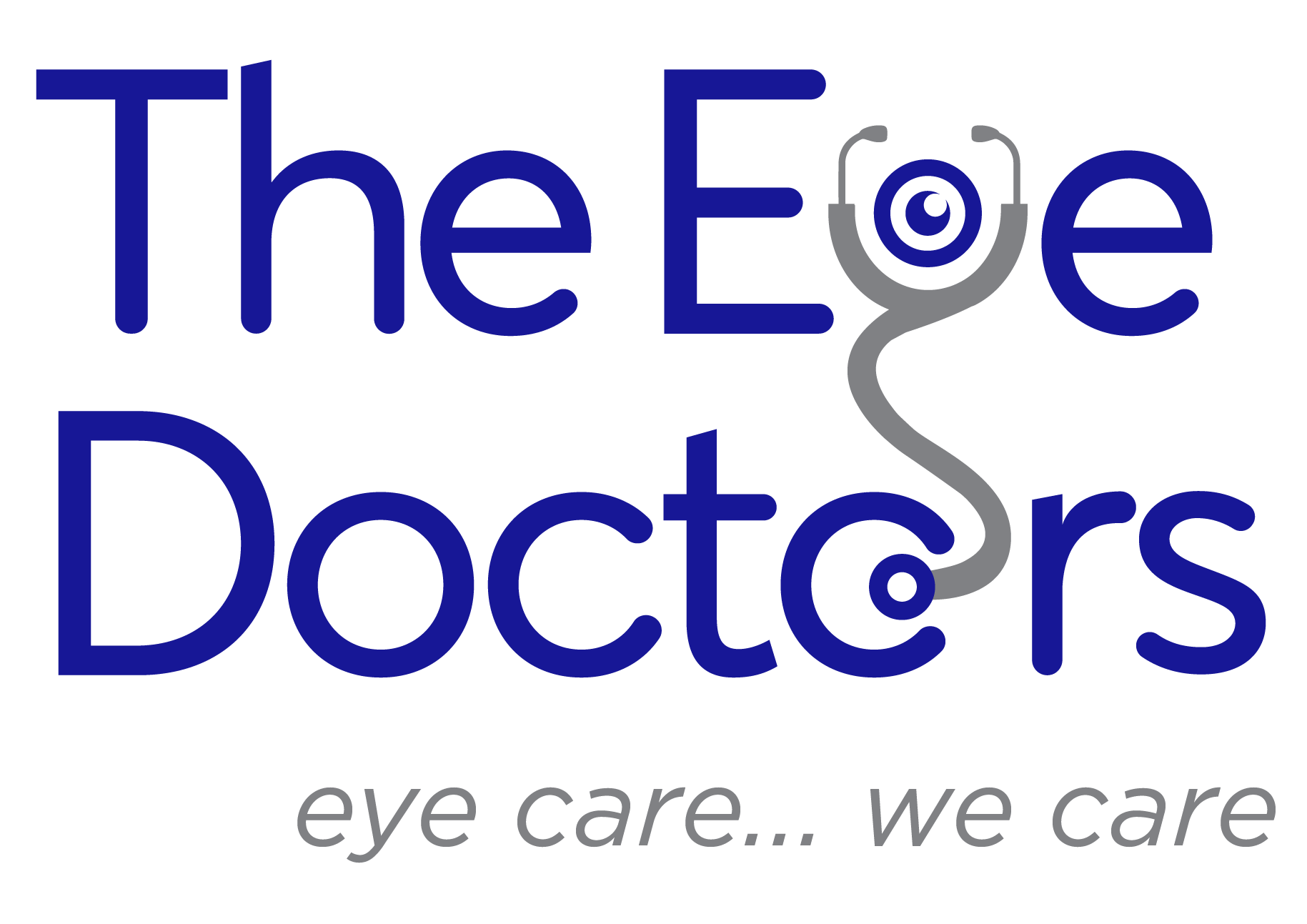As the summer break draws close, many parents and guardians are in a rush preparing their children for the new school year. While new uniforms, books and other school supplies are essential, ensuring your child’s eye health is equally important. That is why we have tailored our back-to-school free eye care program to help prepare your child’s vision for the new academic year. We know that good eye sight could enhance a bright future for your child, and dealing with lazy eyes early is a sure bet for your Child’s good sight.
Why Eye Health Matters
Lazy eye which is also referred to as amblyopia has many causes. It is often caused by either a misalignment of a child’s eyes, such as crossed eyes, or a difference in image quality between the two eyes, which implies that one eye focuses better than the other. This situation makes one eye stronger than the other. If this continues, the weaker eye may become less functional. To prevent rendering one of your child’s eyes inactive in the future, you need to take certain proactive measures.

Key Steps for Eye Health Preparation
1. Plan A Comprehensive Eye Exam
It is always good to be among the early birds. Early detection is key in preventing all eye conditions. A thorough eye examination can help identify any vision issues before they affect your child’s academic performance. Fix a date to visit our three branches in the following locations.
Fountain Place Plaza, 15 Addo Road, Ajah. 07025001602
23 Hughes Avenue, Alagomeji, Yaba. 08136110369
60 Toyin Street, Ikeja, Lagos. 08106186729
For your children to enjoy our back-to-school free eye care program. Once you get to our clinic, your child’s eye will be checked for visual acuity, eye alignment, and overall eye health, which can help to detect issues like near-sightedness, farsightedness, astigmatism, and other potential eye problems.
2. Follow-Up Treatment
Once you discover that there is an issue with the eye of your child, don’t leave the situation to fate or self prescription. Follow through with recommended treatments. This might include corrective lenses, eye patches, or vision therapy depending on the specific needs of the child. By detecting and following up on vision problems early, parents and healthcare providers can help their child achieve their full potential in school and beyond.
3. Monitor Your Child’s Screen Time
In today’s digital age, your children are often exposed to screens more than ever, which can result in digital eye strain. Excessive screen time can lead to discomfort and potentially long-term vision issues. Parents should encourage their child to observe breaks using the 20-20-20 rule: every 20 minutes, take a 20-second break to look at something 20 feet away. Similarly, regular eye exams can detect not only vision problems but other eye health issues and general health issues and other early signs of serious conditions like glaucoma or retinal problems.
View this post on Instagram
Signs That Your Child May Need Eye Exam
a) Squinting or Tilting The Head: Squinting is often a sign that your child is having difficulty seeing clearly. It’s a way to temporarily improve focus by reducing the amount of light entering the eye and changing the shape of the eye to enhance clarity. Squinting or tilting is a common sign of underlying vision problems and early eye examination can make a significant difference in your child’s overall eye health and academic performance.
b) Frequent Headaches: especially when your child complains of headaches after reading, doing homework, or spending time on screens, can be a sign of vision problems. These headaches often result from the strain the eyes undergo when trying to focus on objects that are blurry or when trying to compensate for misalignment. headaches can be a significant sign of a vision problem such as refractive errors, eye strain (Asthenopia) and convergence insufficiency, especially in children.
c) Difficulty with Reading or Writing: When your child starts having trouble reading or writing, it may not just be a learning issue but could also be related to their vision. Vision problems can make it difficult for your child to focus on words, track lines of text, or see what they are writing, leading to frustration and poor academic performance. Difficulty with reading or writing can be a sign of an underlying vision problem. Addressing these vision problems can boost your child’s confidence and academic performance, making learning more enjoyable and less frustrating.
d) Sitting Too Close To Screens: Once you notice that your child consistently sits very close to the television, computer, or tablet, it can be a red flag for underlying vision issues. This behaviour is typically a way for your child to compensate for not being able to see clearly from a normal viewing distance. Sitting too close to screens can further strain your child’s eyes, potentially worsening vision problems over time. This behaviour can also lead to poor posture and other physical discomforts.
If you notice any of the above signs in your child frequently, it’s important to have their vision checked by The Eye Doctors. Early detection of vision issues like amblyopia can lead to effective treatments, such as prescription glasses or contact lenses, which can correct the problem and help the child develop healthier viewing habits.
The Importance of Early Detection
Approximately 80% of learning in school relies on vision. Children use their eyes to read, write, and participate in classroom activities. Poor vision can lead to difficulties in these areas, impacting grades and overall success. Early detection and treatment of vision problems like amblyopia can greatly improve visual outcomes.
Early treatment often involves corrective measures like glasses or contact lenses, and sometimes eye patches or other techniques to strengthen the weaker eye. The sooner you address these issues, the better the chance of reversing vision loss and improving your child’s visual health.
For a brighter academic future, ensure your child’s vision is in top shape. Click here to schedule their eye exam today and take the first step towards a successful school year.
